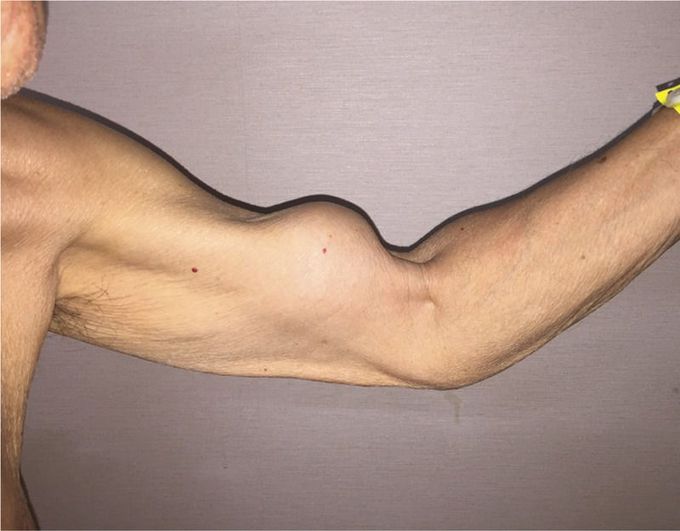


“Popeye” Sign
A 79-year-old man presented to the orthopedic clinic with a large bulge on his left upper arm. The bulge had developed 2 days before presentation, when he was lifting an object and felt a sudden sharp pain in his left shoulder. A physical examination revealed an obvious deformity in the anterior mid-upper arm that became more pronounced during elbow flexion. Magnetic resonance imaging of the shoulder revealed a complete rupture of the long head of the biceps tendon. Known as the “Popeye” sign or Popeye deformity, this finding on physical examination is caused by bulging of the biceps muscle belly after rupture of the biceps tendon; however, patients with a rupture of this tendon do not always present with the Popeye sign. Rupture of the biceps tendon usually occurs proximally and often occurs in older patients, as a result of the shoulder joint and associated muscles, tendons, and ligaments undergoing degenerative changes associated with overuse and aging. Nonoperative management is often sufficient for ruptures of the proximal biceps tendon, although athletes or others whose occupations require full arm strength may require surgical repair. This patient was treated with nonsteroidal antiinflammatory drugs. At follow-up 4 months after the initial presentation, the patient’s pain was reduced and no longer affected his daily life.

